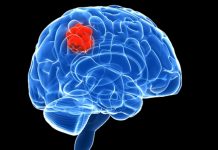The type of disease which occurs due to the genetic disorders caused by sickle haemoglobin (Hgb S or Hb S) is collectively termed as sickle cell disease.
This disease is characterized by the change in shape of the red blood cells.
These cells due to the deoxygenation caused by the polymerization of the abnormal sickle haemoglobin look like a banana instead of their normal shape and size.
During this process the red blood cell membrane is totally damaged causing the cells to get stuck in the blood vessels. This in turn results various conditions called the ischemia and the infarction which are responsible for the organ damage. This deprives the
downstream tissues of oxygen. The mentioned conditions result in a stroke.
This sickle cell disease is considered to be a chronic disease. People suffering from this disease are generally normal many times but at times are punctuated by periodic attacks which are very painful.
They have to lead a life with this disease until their end. Though the survival rate of the people with sickle cell disease is not perfectly predicted but it is said that the life expectancy is shortened.
People Prone to Sickle Cell Disease
According to statistics the sufferers on an average are said to live 40-50years. Again this data differs in males and females. Females with this disease are expected to live up to 48 years and males 40 years.
The occurrence of sickle cell disease is described as more common in the sub-Saharan Africa. The analysis is based on the fact that this disease is more common in regions where malaria is more common or at a time was common in the past. People of other ethinicities are also affected for example from Mediterranean countries (including Turkey, Greece, and Italy) or East India.
The cause of this disease is linked with the inheritance of the recessive mutated allele. Mostly the African Americans and some Latino Americans are affected by this sickle cell disease in the United States especially the hemoglobin SS disease (sickle cell anemia).
Sickle Cell Disease Diagnosis
The diagnosis of this sickle cell disease is not specific meaning no standard method of testing for the disease exists. The diagnosis totally depends on the patient’s pain at different point and different time.
Anemia is a very common complication of SCD, but sickle cell anemia is very different from iron deficiency anemia. iron deficiency anemia can often easily be managed with an iron supplement, while treatment of anemia in sickle cell disease involves blood transfusions. Iron supplements should not be used to treat sickle cell anemia.
Although haemolysis which often causes anemia and jaundice is always present in people with this disease the diagnosis is done based on the description of the pain.
However some minor tests are present for analysis of the disease which includes the haemoglobin electrophoresis which detects the abnormal haemoglobin. This is a form of gel on which the various types of haemoglobin move at varying speed.
The most common types of sickle cell disease are sickle-cell haemoglobin (HgbS) and haemoglobin C with sickling (HgbSC). These two forms can be identified from there. In very few cases the genetic testing is performed.
Sickle Cell Disease >> Sickle Cell Disease Treatment







